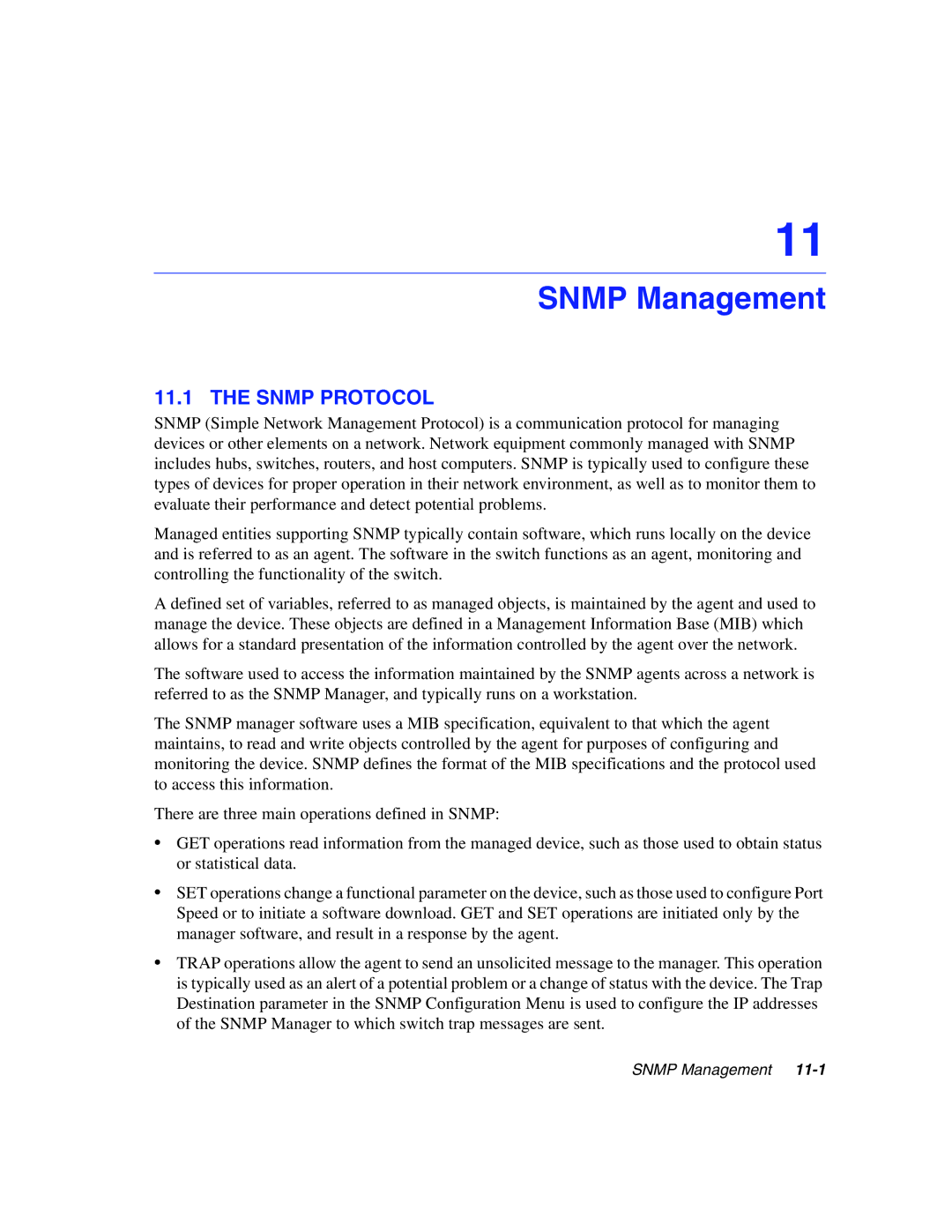11
SNMP Management
11.1 THE SNMP PROTOCOL
SNMP (Simple Network Management Protocol) is a communication protocol for managing devices or other elements on a network. Network equipment commonly managed with SNMP includes hubs, switches, routers, and host computers. SNMP is typically used to configure these types of devices for proper operation in their network environment, as well as to monitor them to evaluate their performance and detect potential problems.
Managed entities supporting SNMP typically contain software, which runs locally on the device and is referred to as an agent. The software in the switch functions as an agent, monitoring and controlling the functionality of the switch.
A defined set of variables, referred to as managed objects, is maintained by the agent and used to manage the device. These objects are defined in a Management Information Base (MIB) which allows for a standard presentation of the information controlled by the agent over the network.
The software used to access the information maintained by the SNMP agents across a network is referred to as the SNMP Manager, and typically runs on a workstation.
The SNMP manager software uses a MIB specification, equivalent to that which the agent maintains, to read and write objects controlled by the agent for purposes of configuring and monitoring the device. SNMP defines the format of the MIB specifications and the protocol used to access this information.
There are three main operations defined in SNMP:
•GET operations read information from the managed device, such as those used to obtain status or statistical data.
•SET operations change a functional parameter on the device, such as those used to configure Port Speed or to initiate a software download. GET and SET operations are initiated only by the manager software, and result in a response by the agent.
•TRAP operations allow the agent to send an unsolicited message to the manager. This operation is typically used as an alert of a potential problem or a change of status with the device. The Trap Destination parameter in the SNMP Configuration Menu is used to configure the IP addresses of the SNMP Manager to which switch trap messages are sent.
SNMP Management
